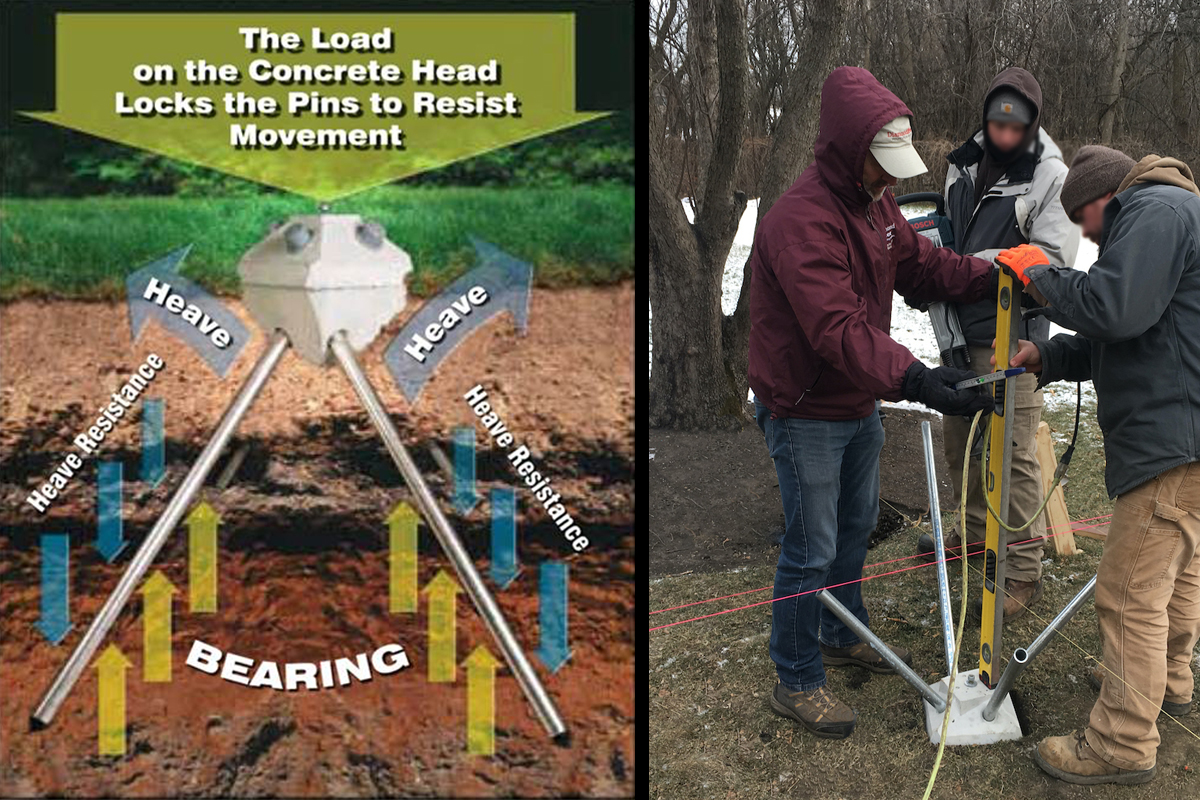Uplift Resistance Explained
By: DiamondPier
There are two general types of foundations; deep vertical pilings and shallow spread footings. For uplift resistance, pilings rely primarily on what is known as “skin friction” between the soils and the pile along the length of the driven pile. Footings rely mostly on the weight of the concrete to counteract uplift forces. In recent years, bell shaped footings have been introduced to provide additional material weight along with some amount of additional resistance due to the soils, known as overburden, above the bell shape.
When considering uplift resistance, Pin Pile Technology combines the best features of both types of foundations. As with the vertical pilings, the pin pile develops skin friction with the surrounding soils. Like a spread footing, the pin pile group is overburdened by the soils above. But instead of the disturbed soils over a conventional spread footing, the pin pile group is overburdened by fully compacted, undisturbed soils.
These undisturbed soils acting together with the widely spread, and locked in piles, provide a mechanical advantage. Consider the Diamond Pier DP-50/50” model. This system (concrete pier head with embedded anchor bolt, 4 1” x 50” schedule 40 galvanized steel pipes, inspection plugs and caps) weighs 85 pounds…and provides 1,200 pounds of uplift resistance! Keep in mind that this is not a single 50” pipe but rather nearly 17’ of pipe spread out and locked into place beneath the ground.
When it comes to foundation performance, soils matter. By leaving the soil structure intact, the Diamond Pier provides truly remarkable uplift resistance. Whether your uplift concern is driven by high winds, high waters or frost, the Diamond Pier offers best in class performance.
Too good to be true? Fully accredited engineering test reports are available upon request.



